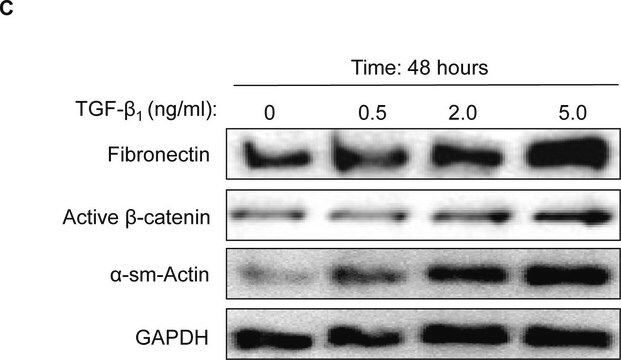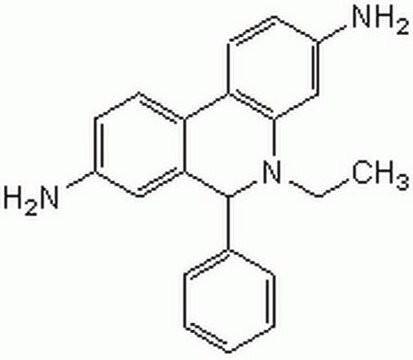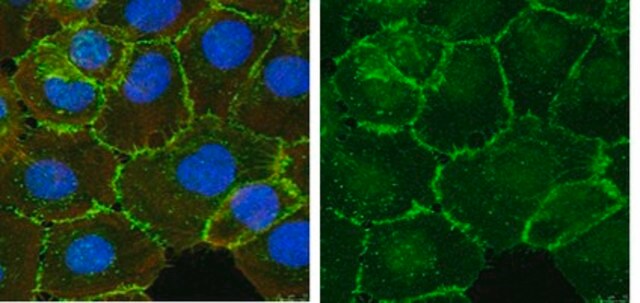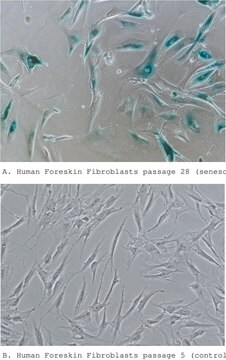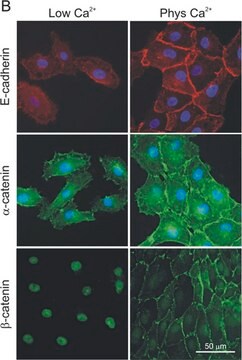C4231
Anti-phospho-β-Catenin (pSer33/pSer37) antibody, Mouse monoclonal
clone BC-22, purified from hybridoma cell culture
Synonym(s):
Anti-CTNNB, Anti-EVR7, Anti-MRD19, Anti-NEDSDV, Anti-armadillo
About This Item
Recommended Products
biological source
mouse
Quality Level
conjugate
unconjugated
antibody form
purified immunoglobulin
antibody product type
primary antibodies
clone
BC-22, monoclonal
form
buffered aqueous solution
mol wt
antigen ~94 kDa
species reactivity
mouse, human, rat, chicken
concentration
~2 mg/mL
technique(s)
indirect ELISA: suitable
microarray: suitable
western blot: 5-10 μg/mL using whole cell extract of cultured human 293 cells treated with proteasome inhibitor MG132
isotype
IgG2b
UniProt accession no.
shipped in
dry ice
storage temp.
−20°C
target post-translational modification
phosphorylation (pSer33/pSer37)
Gene Information
human ... CTNNB1(1499)
mouse ... Ctnnb1(12387)
rat ... Ctnnb1(84353)
General description
Specificity
Immunogen
Application
- indirect ELISA
- microarray
- western blot at a dilution of 5-10μg/mL using whole cell extract of cultured human 293 cells treated with proteasome inhibitor MG132.
Biochem/physiol Actions
In Wnt/β-catenin signal pathway β-Catenin participates as a signal transduction molecule. The pathway is associated with development, tissue homeostasis and oncogenic transcription. Upregulation of the gene is associated with glioma cell proliferation. The protein encoded has dual function that regulates the coordination of cell-cell adhesion by linking cytoskeleton and cellular junctions and gene transcription. Wnt/β-catenin signal pathway is known to induce progression colon cancer progression.
Physical form
Disclaimer
Not finding the right product?
Try our Product Selector Tool.
Storage Class Code
10 - Combustible liquids
WGK
nwg
Flash Point(F)
Not applicable
Flash Point(C)
Not applicable
Regulatory Listings
Regulatory Listings are mainly provided for chemical products. Only limited information can be provided here for non-chemical products. No entry means none of the components are listed. It is the user’s obligation to ensure the safe and legal use of the product.
JAN Code
C4231-.2ML:
C4231-VAR:
C4231-BULK:
Certificates of Analysis (COA)
Search for Certificates of Analysis (COA) by entering the products Lot/Batch Number. Lot and Batch Numbers can be found on a product’s label following the words ‘Lot’ or ‘Batch’.
Already Own This Product?
Find documentation for the products that you have recently purchased in the Document Library.
Our team of scientists has experience in all areas of research including Life Science, Material Science, Chemical Synthesis, Chromatography, Analytical and many others.
Contact Technical Service